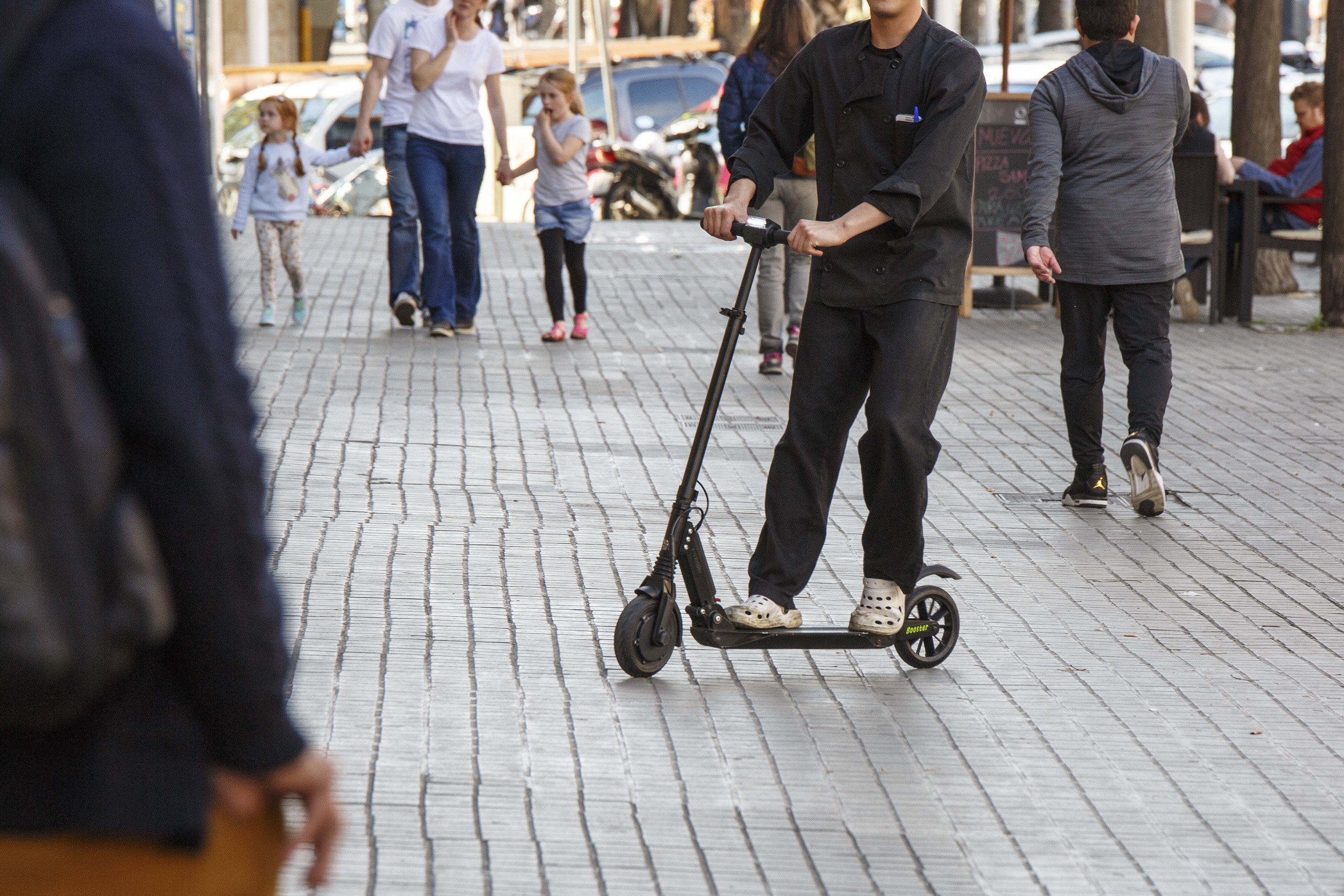The exponential growth of the use of electric scooters - also known as VMPs or Personal Mobility Vehicles - in the city of Barcelona has generated new problems of coexistence on the street, with complaints from both the users of the devices and other members of the public about their adaptation to and presence in the streets of the Catalan capital. One of the key aspects is the use of these vehicles on the pavement, which is specifically prohibited, except when there is a bike lane, in which case the speed is limited to 10km/h.
The popularity of this type of transport increased by 276% in 2019 compared to 2018, the period of the great boom in the use of electric scooters, and was 22% up in 2020 compared to 2019, according to data provided this Wednesday by RACC, which presented the report "The behaviour of users of personal mobility vehicles (VMP) in Barcelona", which studies the profiles and behaviour of people who travel by electric scooter and whose key results reveal that there is a high degree of ignorance of the regulations and that users go faster than allowed.
Specifically, according to the study presented by Josep Mateu, president of Catalonia's automobile association, the RACC, and Cristian Bardají, director of the mobility area of the RACC, around half - 51% - of electric scooter users admit they are unaware of the rules that apply to them over aspects such as the use of safety elements - helmets and lights - which are either recommended or mandatory depending on the type of scooter, the ban on carrying passengers and, above all: speed limits and the spaces where they can be ridden - they are prohibited on pavements (that is, for US English users: sidewalks) except for pavement bike lanes.
94% of users break speed limits on pavement
Speeding is one of the main issues identified in the report, based on 600 face-to-face surveys and 3,065 observations. Specifically, 19% admit to exceeding the speed limit, which can never be more than 25 km/h, and 9% admit that they have their vehicle adjusted in order to be able to break that speed limit.
The most worrying statistics are those on scooter traffic on pavement bike lanes, where the speed limit is 10 km/h, while on bike lanes on the road the limit is 25 km/h. According to the report, 94% of users exceed this limit on pavement bike lanes.
Segregation of mobility spaces
Given this data, the RACC recommends that the authorities should focus on aspects such as segregating spaces for different types of mobility, especially the need to put bike lanes on the road level, rather than having them on the pedestrian pavement. "It makes more sense to segregate spaces than to have them sharing the same space with pedestrians," said Bardají.
Other recommendations of the RACC are the need to provide "minimum mandatory and free information" to scooter users, most of whom do not have even two years of practice in the use of their devices and move to scooters from means of mobility such as public transport or walking, which do not involve prior road safety education. However, the RACC rules out the need for a specific license and only opens the door for this compulsory road safety education "to be transformed into a small driving license." They also advocate for a registry to prevent theft, but not necessarily a visible registration number.
Speed limits for scooters (VMP) in Barcelona city
- Speed limit 25 km/h on cycle lanes (on the road) and on Ciutat 30 streets (minor traffic streets with 30km/h limit for other vehicles)
- Speed limit 10 km/h on cycle lanes (on the pavement), curbless streets (if vehicles are allowed), and parks (pedestrians have right-of-way)
- Prohibited on pavements; pedestrianized zones; roads except for Ciutat 30 streets; tunnels and motorways
- Fines: 100-500 euros
See all the rules for VMP use in Barcelona (flyer in English, here).
Main image: An electric scooter user on the pavement / Sergi Alcàzar

